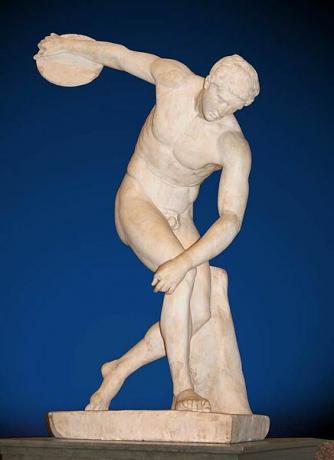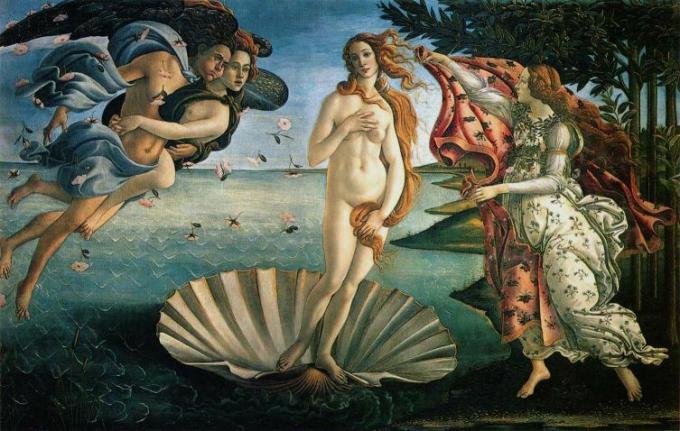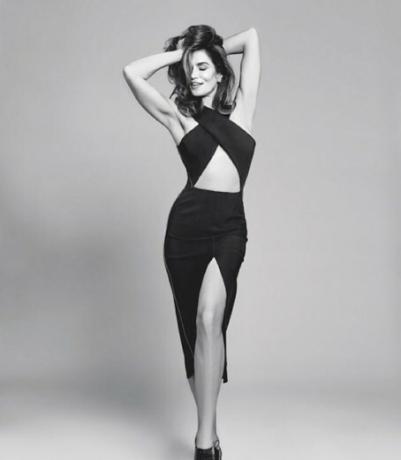
The search for a perfect body is part of many people's goals. But anyone who thinks this is a current concern is wrong. Since prehistoric times, there have been desirable models of beauty that are considered socially appropriate.
There were periods, like the Middle Ages, for example, when people had no control over their aesthetics. This is because the established model was against the beliefs of the time, totally focused on Christianity.
see more
Scientists use technology to unlock secrets in ancient Egyptian art…
Archaeologists discover stunning Bronze Age tombs in…
Over time many things have changed, especially with regard to the individuality of the human being. Today, people can live with the body they want, without being imposed on something they don't want. Despite this, for both men and women, certain models are considered the standard of what is beautiful and desirable, which does not mean that it will be eternal.
Within the evolution of the concept of beauty, we can observe times when a voluptuous body was extremely desired. In others, the thinner the better. Check out how these transformations were over time.
Yes, even in prehistory there was a model of beauty. Proof of this is the sculpture Venus of Willendorf. The piece, which is around 30,000 years old, is approximately 11cm high and features voluptuous shapes.

It is believed that bodies with more avant-garde shapes, such as those in the image above, were more able to procreate, that is, to generate descendants, which was among the priorities of prehistoric peoples. Some studies say that the Venus of Willendorf was used in fertility rituals.
The first models of beauty, as well as the first gyms, appeared in Ancient Greece. The sports complexes, called gymnasiums, integrated not only the cult of the body, but also privileged intellectual training. 
The ideal model, for men and women, was related to balance and harmony, with proportional measures always prevailing. See the shapes of the Discobolus, by the Greek sculptor Miron, illustrated in the photo.
Inside the gymnasiums, many young people prepared for competitions and to become soldiers. A rather curious piece of information is that in the sculptures they are always naked, because they trained that way, in Greek, Gymnos what to say naked.
Also known as Age of darkness, it was a time when thought was completely focused on the divine, so that concerns were considered an affront to this ideal. Under the full influence of the Church, the cult of forms gave way to covered and modest bodies.

The nude was completely out of the picture, being considered sinful. Therefore, the robes were long, with long sleeves and often with adornments on the head, so that only the face was visible. Due to her relationship with the Church, the Virgin Mary was considered an example of beauty, closely linked to the sacred.
With regard to the concepts of beauty, the Rebirth it is strongly marked by the resumption of the thought of Classical Antiquity. The female body was again valued and displayed in works of art, as in The Birth of Venus, by Botticelli, dated 1485.

The divine, represented by the Virgin Mary, gave way to nymphs, demigods and especially the goddess Venus, represented in the photo. Another striking characteristic is that the bodies were more voluptuous. Full breasts, wide hips and even a prominent belly were considered beautiful on women's bodies.
It was a time when female forms were little exalted. To disguise their breasts and hips, women began to wear straighter dresses with a length below the knees. Often sashes were wrapped around the body to achieve a straighter silhouette.

From then on, women began to leave the work routine in their homes to occupy positions in the formal labor market. The look was androgynous and the short hair gained a lot of strength. The cut à la garçonne it was a real fever.
Between the 40s and 50s, fuller bodies came back with everything, having actors and actresses who shone in Hollywood as their main reference. Voluptuous and sexy shapes, like those of Marilyn Monroe (photo), Bettie Page and Rita Hayworth were the most desired.
Wide hips, full breasts, often conquered with padding, and thick thighs characterized these women, who were symbols of one of the most iconic eras of world cinema.

Male aesthetic standards were based not only on cinema, but also on the music scene at the time. Glenn Ford, Clark Gable, Marlon Brando and Elvis Presley are among the representatives of this generation.
This era saw two completely opposite trends. On one side, Brigitte Bardot's wide hips and large breasts, but with a thin waist, and on the other, Twiggy's excessive thinness.

These examples clearly elucidate what the desired bodies of the time were like. Many women sought Brigitte's ample forms, while others were fixated on the short hair and straight body that characterized the top model's boyish look.
This was the era of supermodels, and the cult of muscular men's bodies. Tall and thin, but curvy models were considered the most beautiful women and with the most desired bodies of the time. Linda Evangelista and Cindy Crawford are two great icons of that period.

Also at that time, bodybuilding became a fever among men and women. The gymnastics videos in the actress Jane Fonda made an overwhelming success. Arnold Schwarzenegger, on the other hand, consecrated the toned body in films like Terminator. Along with the strong and slender body, women began to look for surgical devices, such as a silicone prosthesis, to achieve the ideal body.
We currently live in antagonistic situations. While women's emancipation movements help many people to accept themselves as they are, the muses internet fitness and the immensity of aesthetic treatments available, encourage the search for bodies more and more perfect.

A six-pack belly, for men and women, is an object of desire that makes men and women dedicate themselves diligently to an exercise and diet routine. On the other hand, celebrities like Kim Kardashian, Nicki Minaj and Beyoncé, exhibit curvilinear silhouettes, with wide hips, making this body type also a trend.


